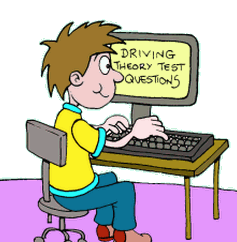What to look for when you see a vehicle
Here is a simple check list of things to take into account when you check a used vehicle that you are considering purchasing.
Firstly, look at the engine carefully, and see if you think it has been changed in any way. If there is any doubt on this or other points listed below then you are best to walk away from the sale. Remember that if you do spot something dodgy, you don't of course need to say to the person selling the vehicle that you think there is something dodgy with it! You can simply say you will think about the purchase.
Check that all the locks on the car open with the same key, and also check that there are no dents or bumps anywhere on the car. Is the petrol cap clearly the one the car came with, and are there two keys?
Look at the registration number of the vehicle, there is more information on this in another article in this section.
Some vehicles will have a Q registration number, which indicates one of several possibilities: the car has been imported without proof of age, has been rebuilt, or has unknown age or identity: for further information on why this is look at the V5C which should explain why it has a Q reg.
There are various elements that you should also check with regard to the identity of the car, and these include that all window etchings match each other, and that the seller knows all about the vehicle and its controls, because they should be very familiar having driven it day in day out for possibly several years!
There is a full checklist made available by the DVLA that you should print and read through and bring with you when it comes to inspecting the vehicle:
http://www.direct.gov.uk/prod_consum_dg/groups/dg_digitalassets/@dg/@en/@motor/documents/digitalasset/dg_186824.pdf
If you are not confident, then take someone else along with you and potentially a independent and qualified examiner to see the vehicle with you.
Related Articles...
Road conditions: driving in rain
Driving in rain is something that you can be sure you will experience regularly once you are an actual driver, although depending where you live and the time of year you learnt, you might have...
Things to look for when checking tyre condition
The tyres are extremely important elements of the car, yet many people do not think much about them when checking that their vehicle is roadworthy.
However, in addition to checking the amount...
Driving and Eyesight Requirements
If you require glasses in order to meet the requirements for driving legally, then you must ensure that you wear them whilst you drive (or corrective lenses).
There are some conditions that...
The multiple choice theory test
This is the first part of the theory test, and is done at a computer rather than on paper. There are many places around the country whereby you are able to take the theory test. Your driving...
Test your Driving Theory
Want to test your driving theory knowledge? We have all the multiple choice revision questions for car drivers together with a range of hazard perception clips.
With our unique feedback and...
Road Tax Disc Explained
You might hear to this referred as to something called excise licence, but in common parlance (speech!) this is called road tax.
And you will have a circular piece of paper that comes to show...
What to do at a roundabout
Roundabouts come in all shapes and sizes, but the basic rules that govern roundabouts are simple.
However that doesn't stop people interpreting the rules and indicating and lines in all sorts...
Tips on driving in the country
Driving in the country can be quite a different experience to driving around towns and on motorways.
Firstly, depending where you are, the road quality can be very variable and bumpy and...
The Driving Standards Agency
The Driving Standards Agency has a website at www.dsa.gov.uk.
They are an executive agency within the Department for Transport in the UK.
They deliver tests for theory and practical...
What causes accidents: overtaking
When you overtake a vehicle, there are often many things to consider.
First of all you need to ensure that it is, as far as you are aware, safe to do so. Therefore don't overtake close to...
Back to home page of driving theory test questions

